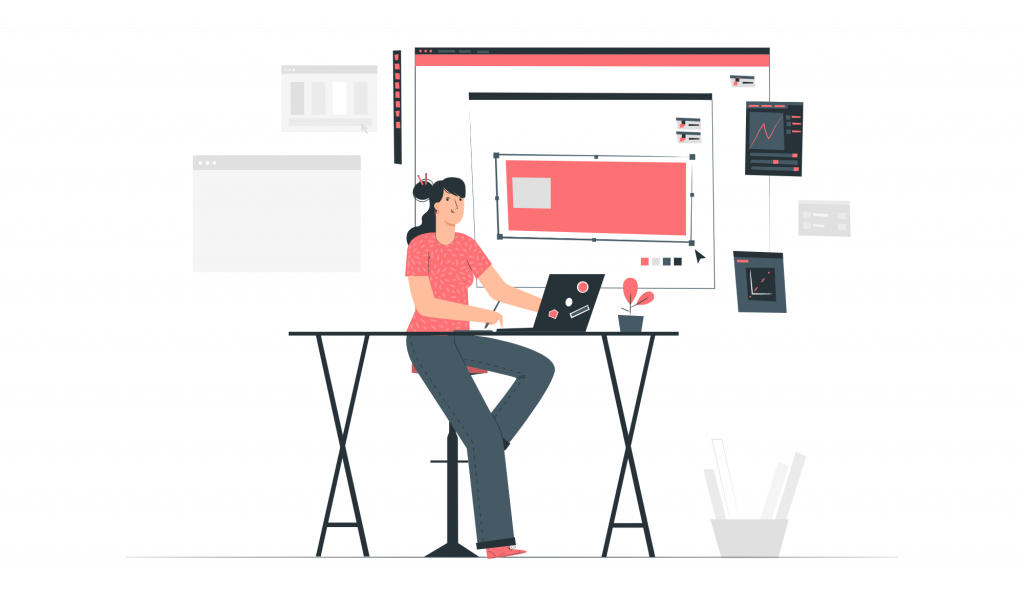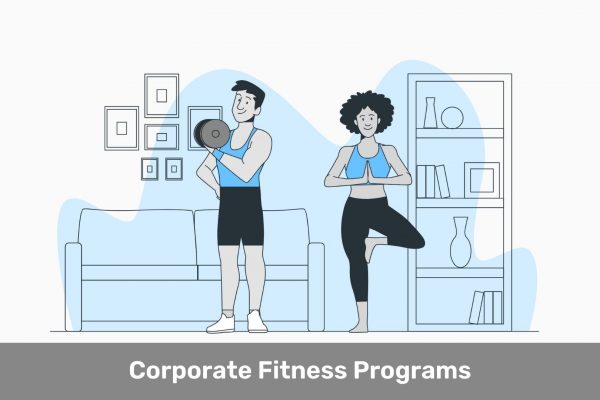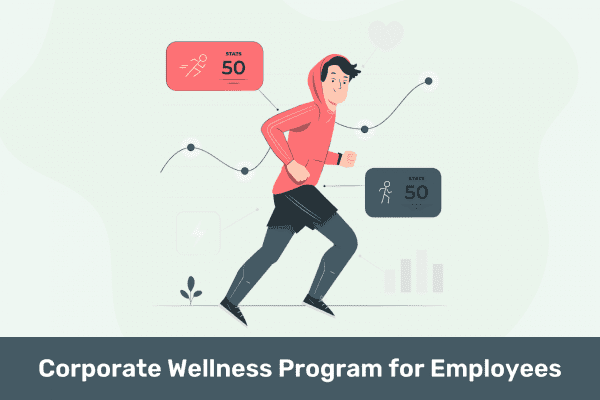Introduction
Welcome to the era where prioritizing employee well-being isn’t just a corporate buzzword but a strategic imperative. As we navigate the intricacies of the modern workplace, the significance of employee wellness programs emerges as a linchpin in fostering a thriving and engaged workforce. After all, it’s not merely about ticking off boxes in the HR handbook; it’s about acknowledging that a healthy, happy team is an empowered and productive one.
According to recent studies, organizations with robust employee wellness programs report a staggering 25% increase in overall employee satisfaction. Moreover, as per CDC, absenteeism takes a nosedive by up to 40% in companies that actively invest in the well-being of their staff. These statistics underscore a critical reality: employee wellness programs are not just a perk; they are a strategic investment in the heartbeat of any successful organization – its people.
Connection between wellness programs and team morale
Now, let’s talk about the symbiotic relationship between employee wellness programs and team morale. Imagine a workplace where team members aren’t just colleagues but comrades, where individuals are not just clocking in hours but actively contributing to a shared sense of purpose. This transformation isn’t an abstract concept; it’s the direct result of cultivating a culture of well-being within the organization.
When employees feel supported in their physical, mental, and emotional health, a magical alchemy occurs. Team morale skyrockets. It’s more than just a statistical observation; it’s a palpable energy that permeates the workspace. Productivity soars, collaboration thrives, and, perhaps most importantly, individuals feel a genuine sense of belonging. Wellness programs aren’t just about yoga sessions and gym memberships; they’re about fostering a work environment where each team member feels valued, supported, and motivated to bring their best selves to the table.
So, as we embark on this journey of exploring innovative employee wellness program ideas, keep in mind that we’re not just talking about checklists and initiatives. We’re talking about the heartbeat of your organization, the pulse that drives success, and the catalyst for building a workplace where people don’t just work – they thrive. Get ready to unlock the full potential of your team through the power of holistic well-being.
What is an Employee Wellness Program?
An employee wellness program is a structured initiative implemented by an organization to promote and support the overall health and well-being of its employees. These programs are designed to enhance various aspects of employees’ physical, mental, and emotional health, fostering a workplace culture that prioritizes holistic well-being.
Employee wellness programs often include a variety of activities, resources, and incentives aimed at encouraging healthy lifestyle choices, preventing illness, and creating a positive and supportive work environment. The overarching goal is to improve the overall health and productivity of employees while fostering a sense of community and engagement within the organization.
Why create an Employee Wellness Program?
- Employee wellness programs contribute to the overall health and well-being of the workforce. By providing resources and initiatives that support physical, mental, and emotional health, organizations create an environment that fosters a sense of care for employees’ holistic well-being.
- A well-designed wellness program can significantly boost employee morale and engagement. When employees feel supported in their health and lifestyle goals, they are more likely to be satisfied with their work environment, leading to increased motivation, productivity, and a positive company culture.
- Healthy and engaged employees are more likely to perform at their best. Employee wellness programs can reduce absenteeism and presenteeism, as healthier individuals are better equipped to manage stress, maintain focus, and meet job expectations. This, in turn, positively impacts overall productivity and organizational success.
- Proactive wellness initiatives can contribute to long-term cost savings for organizations. By promoting preventive health measures, such as regular screenings and healthy lifestyle choices, employers may observe a decrease in healthcare costs associated with treating preventable illnesses and chronic conditions.
- Employee wellness programs can be a significant factor in attracting top talent and retaining valuable employees. In a competitive job market, candidates and existing staff increasingly value employers who prioritize their well-being. Offering a robust wellness program is a tangible demonstration of an organization’s commitment to the health and happiness of its workforce, making it an attractive place to work.
List of Employee Wellness Program Ideas
In developing an employee wellness program, consider a range of benefits and activities. Some elements may be ongoing, while others can be designed as special events occurring just once. Furthermore, the program can be divided into different categories for better organization.
1. Fitness Challenges as Employee Wellness Program Ideas
Physical wellness initiatives focus on promoting and enhancing the overall health and fitness of employees. Here’s a description of the three outlined initiatives:
a) Step Challenges:

-
- Concept: Step challenges encourage employees to increase their physical activity by tracking the number of steps they take each day.
- Implementation: Employees use fitness trackers or mobile apps to monitor their daily step count.
- Competition: Individuals or teams compete to achieve the highest step count within a specified timeframe.
- Benefits: Promotes a more active lifestyle, fosters friendly competition, and improves overall physical health.
b) Weight Loss Competitions:

-
- Concept: Weight loss competitions motivate employees to adopt healthier eating habits and engage in regular exercise to achieve weight loss goals.
- Implementation: Participants set personalized weight loss targets and track their progress over a defined period.
- Competition: Individuals or teams compete based on the percentage of body weight lost, with rewards for achieving milestones.
- Benefits: Encourages healthy lifestyle changes, enhances team camaraderie, and addresses weight-related health concerns.
c) Team-Based Fitness Goals:
-
- Concept: Team-based fitness goals involve groups of employees working together to achieve common health and wellness objectives.
- Implementation: Teams collaborate on fitness challenges, workout routines, or specific health milestones.
- Competition: Teams compete against each other or collaborate to reach collective fitness achievements, fostering a sense of unity.
- Benefits: Builds a supportive community within the workplace, encourages teamwork, and promotes accountability for individual and team success.
Considerations for Implementation:
-
- Communication: Clearly communicate the rules, objectives, and duration of the fitness challenge to participants.
- Tracking: Provide tools or platforms for participants to easily track their progress and engage with the challenge.
- Incentives: Offer rewards or recognition for individuals or teams that excel in the fitness challenge, encouraging participation and motivation.
- Variety: Incorporate diverse activities to accommodate different fitness levels and preferences, ensuring inclusivity.
Fitness challenges are effective in promoting a culture of health and well-being within the workplace, encouraging employees to adopt and maintain healthy habits while fostering a sense of camaraderie and teamwork.
2. On-Site Exercise Classes as Employee Wellness Program Ideas
a) Yoga Sessions:

-
- Description: Yoga sessions are on-site classes that focus on physical postures, breath control, and meditation. These sessions often blend elements of strength, flexibility, and relaxation. Yoga can help employees reduce stress, improve concentration, and enhance overall well-being.
- Format: Classes may range from beginner to advanced levels, accommodating participants with various skill levels. They typically involve a certified yoga instructor guiding participants through a series of poses, breathing exercises, and relaxation techniques.
- Benefits: Improved flexibility, stress reduction, enhanced posture, increased mindfulness, and relaxation.
b) Zumba or Dance Classes:

-
- Description: Zumba or dance classes are energetic and rhythmic on-site exercise sessions that combine dance movements with aerobic elements. These classes are designed to be fun and engaging, incorporating various dance styles and music genres.
- Format: Led by a professional instructor, Zumba or dance classes often involve choreographed routines set to lively music. Participants can enjoy a full-body workout while improving cardiovascular fitness, coordination, and endurance.
- Benefits: Cardiovascular fitness, calorie burning, stress relief, enhanced mood, and a sense of community through group participation.
c) Meditation and Mindfulness Workshops:

-
- Description: Meditation and mindfulness workshops focus on mental well-being, helping employees cultivate a calm and centered state of mind. These sessions teach techniques to manage stress, enhance focus, and promote a sense of balance.
- Format: Led by experienced instructors or mindfulness experts, these workshops may include guided and gratitude meditation, mindful breathing exercises, and discussions on incorporating mindfulness into daily life. Sessions are often conducted in a quiet and comfortable space.
- Benefits: Stress reduction, improved concentration, emotional well-being, increased self-awareness, and the development of mindfulness skills for handling workplace challenges.
Considerations for Implementation:
-
- Scheduling: Offer a variety of time slots to accommodate different work schedules.
- Instructor Qualifications: Ensure instructors are certified and experienced in their respective fields.
- Space and Equipment: Provide a suitable venue with sufficient space and, if needed, appropriate equipment such as yoga mats or dance props.
- Accessibility: Make classes inclusive and considerate of participants with varying fitness levels and abilities.
- Employee Engagement: Promote classes through internal communication channels and encourage participation through incentives or recognition.
Implementing on-site exercise classes contributes to a healthier and more vibrant workplace, fostering both physical and mental well-being among employees.
3. Nutrition Workshops as Employee Wellness Program Ideas
a) Healthy Eating Seminars:
Healthy eating seminars are educational sessions designed to provide employees with information and guidance on making nutritious food choices. These workshops often cover a range of topics, including the importance of a balanced diet, understanding food labels, portion control, and the benefits of incorporating various food groups into daily meals.
Nutrition experts or registered dietitians may lead these seminars, offering evidence-based information to help employees make informed decisions about their diets. The goal is to promote a better understanding of nutrition, leading to healthier food choices both at work and in employees’ personal lives.
b) Cooking Classes:

Cooking classes as part of an employee wellness program involve hands-on learning experiences focused on preparing nutritious and balanced meals. These classes may be conducted by professional chefs or nutritionists who guide participants through the process of selecting ingredients, cooking techniques, and creating delicious, healthy dishes.
Cooking classes not only enhance employees’ culinary skills but also empower them to make healthier choices when planning and preparing meals at home. These sessions can be conducted in a workplace kitchen or even virtually, allowing for broader participation.
c) Nutritional Counseling Services:
Nutritional counseling services involve one-on-one or group sessions with a registered dietitian or nutrition expert. During these sessions, employees can discuss their individual dietary habits, health goals, and any specific nutritional concerns they may have. The counselor provides personalized advice, diet plans, and practical strategies to help employees meet their health and wellness objectives.
Nutritional counseling services are tailored to address various aspects of well-being, such as weight management, chronic disease prevention, or dietary modifications for specific health conditions. This personalized approach ensures that employees receive guidance that aligns with their unique needs and lifestyles.
4. Flexible Work Hours as Employee Wellness Program Ideas
Flexible work hours, also known as flextime, is a work arrangement that allows employees to have greater control over their work schedules, accommodating their individual needs and personal commitments. This approach recognizes that employees may have varying peak productivity times or external obligations, and it seeks to provide a balance between work and personal life. Here’s a breakdown of the key components:
Flextime:
-
- Flextime allows employees to choose their start and end times within certain limits established by the employer.
- How It Works: For example, instead of a rigid 9-to-5 schedule, employees might have the flexibility to start work anywhere between 7 AM and 10 AM and finish between 4 PM and 7 PM, as long as they complete their required hours.
Four-Day Work Weeks:
-
- A four-day work week condenses the traditional five-day work week into four days.
- How It Works: Employees typically work longer hours on the four days they are in the office (for example, working 10 hours a day instead of 8) and enjoy an extra day off. This can lead to improved work-life balance and increased job satisfaction.
Remote Work Options:
-
- Remote work allows employees to perform their job duties from a location outside the traditional office, often from home or another remote location.
- How It Works: Employees use technology, such as internet connectivity and collaboration tools, to stay connected and productive. Remote work can be either full-time or part-time, depending on the organization’s policies.
Benefits of Flexible Work Hours:
-
- Employees can better manage personal commitments, such as family responsibilities, appointments, or other non-work activities.
-
- The flexibility to tailor work hours to personal preferences can contribute to higher job satisfaction and morale.
-
- With options like remote work or flextime, employees may experience less stress associated with commuting, contributing to overall well-being.
-
- Flexibility can lead to increased productivity as employees can choose to work during their most productive hours.
-
- Offering flexible work options can make an organization more attractive to potential employees and contribute to retaining valuable talent.
-
- Recognizing that employees have diverse needs and preferences, flexible work arrangements promote inclusivity within the workforce.
It’s important for organizations to establish clear guidelines and communication channels to ensure that flexible work arrangements meet both employee needs and organizational goals. Regular communication, trust-building, and performance monitoring are key elements in successfully implementing and maintaining flexible work hours.
5. Mental Health Support as Employee Wellness Program Ideas
a) Employee Assistance Programs (EAP):
Employee Assistance Programs are employer-sponsored initiatives designed to provide confidential counseling and support services to employees facing personal or work-related challenges.
EAPs typically offer a range of services, including counseling sessions, legal and financial assistance, and referrals to specialists. The goal is to help employees navigate and overcome various stressors that may impact their mental health and overall well-being.
b) Stress Management Workshops:
Stress management workshops are organized sessions that aim to equip employees with effective tools and strategies for coping with stress. These workshops may cover topics such as identifying stressors, time management, relaxation techniques, and creating a healthy work-life balance.
The goal is to enhance employees’ ability to manage stress in both professional and personal spheres, ultimately contributing to improved mental health.
c) Mindfulness and Meditation Apps:
Mindfulness and meditation apps provide accessible tools for employees to incorporate mindfulness practices into their daily lives. These apps often feature guided meditation sessions, breathing exercises, and stress-relief techniques.
By promoting regular mindfulness practices, employees can develop greater self-awareness, reduce stress, and improve their overall mental well-being. The flexibility of app-based solutions allows employees to engage with these practices at their convenience, whether at work or home.
6. Health Screenings as Employee Wellness Program Ideas
a) Regular Health Check-ups:

Regular health check-ups are comprehensive examinations conducted by healthcare professionals to assess an individual’s overall health and identify any potential medical issues. These check-ups typically involve a series of physical examinations, medical history reviews, and may include screenings for common health indicators. The purpose is to detect and address health concerns in their early stages, promoting preventive healthcare and maintaining overall well-being.
b) Blood Pressure and Cholesterol Screenings:
Blood pressure and cholesterol screenings are specific tests designed to evaluate cardiovascular health. High blood pressure and elevated cholesterol levels are risk factors for heart disease and other cardiovascular issues.
Blood pressure screenings measure the force of blood against the walls of arteries, while cholesterol screenings assess the levels of different types of cholesterol in the blood. Identifying and managing high blood pressure and cholesterol early on can significantly reduce the risk of heart-related complications.
c) Vision and Dental Check-ups:

Vision and dental check-ups focus on two essential aspects of health — eye and oral care. Vision screenings involve tests to assess visual acuity, eye health, and detect potential eye conditions or diseases. Regular vision check-ups are crucial for maintaining good eyesight and addressing any vision-related issues.
Dental check-ups, on the other hand, involve examinations by dentists to assess oral health. These check-ups often include cleaning, X-rays, and evaluations for cavities, gum disease, and other dental concerns. Dental screenings play a vital role in preventing oral health problems, maintaining good oral hygiene, and addressing dental issues early to avoid complications.
Collectively, regular health check-ups, blood pressure and cholesterol screenings, as well as vision and dental check-ups, contribute to a proactive approach to healthcare. By identifying and managing health issues early, individuals can take steps to maintain or improve their overall health and well-being, leading to a healthier and more productive lifestyle. Employers often incorporate these screenings into employee wellness programs to promote a health-conscious workplace and prevent potential health issues among their workforce.
7. Wellness Challenges as Employee Wellness Program Ideas
a) Tobacco Cessation Programs:
Tobacco cessation programs are wellness challenges designed to help employees quit smoking or using other tobacco products. These programs typically provide a structured and supportive environment for individuals looking to overcome tobacco addiction. Key components of tobacco cessation programs include:
-
- Educational Resources: Offering information on the health risks associated with smoking and the benefits of quitting.
-
- Counseling Support: Providing access to counseling services or support groups to address the psychological aspects of quitting.
-
- Nicotine Replacement Therapy (NRT): Offering options such as patches, gum, or lozenges to help manage nicotine withdrawal symptoms.
-
- Incentives: Introducing rewards or incentives for participants who successfully complete the program or reach specific milestones in their journey to quit smoking.
-
- Peer Support: Encouraging participants to engage with each other for mutual support and motivation.
-
- Regular Check-ins: Implementing regular check-ins with participants to monitor progress and address any challenges they may be facing.
b) Hydration Challenges:

Hydration challenges focus on promoting the importance of proper hydration for overall health and well-being. These challenges encourage employees to increase their daily water intake and maintain good hydration habits. Key features of hydration challenges include:
-
- Daily Water Goals: Setting personalized daily water intake goals based on individual factors such as weight and activity level.
-
- Hydration Tracking: Providing tools or apps for employees to track their daily water consumption.
-
- Education: Offering information on the benefits of staying hydrated and the signs of dehydration.
-
- Team Participation: Organizing the challenge in a team format to foster a sense of camaraderie and mutual encouragement.
-
- Hydration Stations: Placing water stations in common areas or providing reusable water bottles as incentives.
-
- Recognition: Acknowledging and celebrating participants who consistently meet their hydration goals.
c) Sleep Improvement Initiatives:

Sleep improvement initiatives aim to enhance the quality and duration of employees’ sleep, recognizing the crucial role sleep plays in overall health and productivity. Components of sleep improvement initiatives may include:
-
- Sleep Education: Providing information on the importance of sleep, sleep cycles, and the impact of sleep on physical and mental well-being.
-
- Establishing Bedtime Routines: Encouraging employees to establish consistent bedtime routines to signal the body that it’s time to wind down.
-
- Stress Management: Incorporating stress reduction techniques to help employees manage stress and improve sleep quality.
-
- Screen Time Awareness: Educating participants about the effects of excessive screen time on sleep and encouraging digital detox before bedtime.
-
- Sleep Tracking: Introducing tools or apps for employees to monitor their sleep patterns and identify areas for improvement.
-
- Creating a Restful Environment: Offering tips on creating a conducive sleep environment, such as maintaining a comfortable temperature and reducing noise and light.
-
- Promoting Work-Life Balance: Emphasizing the importance of work-life balance to prevent overworking and promote adequate rest.
By implementing these wellness challenges, organizations can actively contribute to the overall health and well-being of their employees, fostering a positive and supportive workplace culture.
8. Financial Wellness Programs as Employee Wellness Program Ideas

Financial wellness programs are initiatives implemented by organizations to support the financial well-being of their employees. These programs recognize that employees’ financial health plays a crucial role in their overall well-being and job performance. Here’s a closer look at three components of financial wellness programs:
Financial Planning Workshops:
-
-
- Objective: These workshops aim to educate employees on various aspects of personal finance and empower them to make informed decisions.
- Topics Covered:
- Budgeting: Creating and managing a budget to track income and expenses.
- Saving and Investing: Understanding different saving and investment options.
- Emergency Fund: Guidance on building and maintaining an emergency fund.
- Financial Goal Setting: Strategies for setting and achieving short-term and long-term financial goals.
- Format: Workshops can be conducted by financial experts, advisors, or through online resources.
-
Retirement Planning Sessions:
-
-
- Objective: Focuses on helping employees plan for a financially secure retirement.
- Topics Covered:
- Retirement Savings: Information on employer-sponsored plans (e.g., 401(k)), IRAs, and other retirement accounts.
- Investment Strategies: Understanding risk tolerance and diversification.
- Social Security: Overview of Social Security benefits and considerations.
- Healthcare in Retirement: Guidance on healthcare expenses during retirement.
- Format: Sessions may include presentations, Q&A sessions, and one-on-one consultations with financial planners.
-
Debt Management Resources:
-
-
- Objective: Assists employees in managing and reducing their debt burden, promoting financial stability.
- Topics Covered:
- Debt Types: Understanding different types of debt (e.g., credit cards, student loans, mortgages).
- Debt Repayment Strategies: Creating effective repayment plans.
- Credit Scores: Importance of maintaining a good credit score and how to improve it.
- Resources and Tools: Providing access to tools, apps, or counseling services for debt management.
- Format: Workshops, online resources, and partnerships with financial counseling services.
-
9. Community Volunteer Programs as Employee Wellness Program Ideas
Community Volunteer Programs involve organizing and promoting group volunteer activities as part of a company’s broader corporate social responsibility efforts. These programs are designed to encourage employees to contribute their time and skills to benefit the local community. Here’s a breakdown of the key components:
Organizing Group Volunteer Activities:
-
-
- Purpose: The primary objective is to bring employees together for a shared experience of giving back to the community.
- Activities: Companies may arrange various volunteer opportunities, such as participating in environmental clean-ups, assisting at local shelters, organizing food drives, or engaging in educational initiatives.
- Team Building: These activities foster teamwork and collaboration among colleagues, providing a different context for employees to interact outside of the workplace.
-
Supporting Local Charities:
-
-
- Selection Process: Companies often choose local charities or nonprofit organizations that align with their values or address specific community needs.
- Financial Support: In addition to volunteering time, companies may provide financial contributions to the selected charities or facilitate employee fundraising initiatives.
- Long-Term Partnerships: Establishing ongoing relationships with specific charities can lead to sustained impact and a sense of shared purpose.
-
Community Outreach Initiatives:
-
-
- Engagement with the Local Community: Companies may actively seek ways to understand the unique needs of the communities in which they operate.
- Customized Initiatives: Tailoring volunteer programs to address specific community challenges ensures a meaningful impact.
- Public Awareness: Communicating about these initiatives internally and externally helps raise awareness about the company’s commitment to social responsibility.
-
Benefits of Community Volunteer Programs:
-
-
- Engaging in volunteer activities fosters a sense of purpose and fulfillment among employees.
- Demonstrating commitment to social causes enhances the company’s reputation in the community.
- Employees may develop new skills or apply existing ones in a different context, contributing to their personal and professional growth.
- Through volunteerism, companies can make a tangible and positive impact on local communities.
-
Implementation Tips:
-
-
- Flexible Opportunities: Provide a range of volunteer opportunities to accommodate various interests and schedules.
- Leadership Involvement: Encourage leadership participation to emphasize the importance of community engagement.
- Recognition: Recognize and celebrate employees’ contributions to reinforce a culture of giving back.
-
Overall, Community Volunteer Programs not only contribute to the well-being of the local community but also strengthen the sense of community within the organization, aligning employees with a shared commitment to social responsibility.
10. Flexible Seating Arrangements
a) Ergonomic Workstations:

Ergonomic workstations are designed to provide employees with a comfortable and supportive environment that minimizes the risk of musculoskeletal issues and maximizes productivity.
Features:
-
- Adjustable chairs with lumbar support to promote good posture.
- Adjustable desks to accommodate different working preferences (sitting or standing).
- Proper lighting to reduce eye strain.
- Placement of computer monitors at eye level to prevent neck strain.
- Use of ergonomic accessories like keyboard trays and mousepads.
b) Standing Desks:
Standing desks, also known as stand-up desks, allow employees to work while standing rather than sitting. This alternative seating arrangement is aimed at reducing sedentary behavior and promoting better health.
Features:
-
- Adjustable height to accommodate individual preferences.
- Anti-fatigue mats for added comfort during prolonged standing.
- Integration with ergonomic accessories like monitor arms and keyboard trays.
- Encouragement for employees to switch between sitting and standing throughout the day.
c) Comfortable Breakout Areas:
Comfortable breakout areas are designated spaces within the workplace designed for relaxation, collaboration, and informal meetings. These areas contribute to a more relaxed and social atmosphere.
Features:
-
- Soft seating options, such as couches, lounge chairs, and bean bags.
- Well-designed lighting to create a cozy ambiance.
- Access to power outlets for employees who want to work in a more casual setting.
- Informal meeting tables or collaboration zones.
- Integration of plants or natural elements to enhance well-being.
Benefits of Flexible Seating Arrangements:
-
- Ergonomic workstations and standing desks can contribute to better posture and reduce the risk of health issues associated with prolonged sitting.
- Employees may experience increased focus and productivity when given the flexibility to choose their preferred working positions.
- Comfortable breakout areas encourage spontaneous collaboration and informal discussions among team members.
- Offering flexibility in seating arrangements can enhance employee satisfaction and contribute to a positive workplace culture.
- Flexible seating arrangements cater to the diverse needs and preferences of employees, acknowledging that one size does not fit all.
Implementing flexible seating arrangements reflects a modern approach to workspace design, prioritizing employee comfort, health, and collaboration.
11. Social Connection Events:

Social connection events play a crucial role in fostering a positive workplace culture by promoting team camaraderie, enhancing interpersonal relationships, and providing employees with opportunities to celebrate both personal and professional achievements. These events are designed to create a sense of community within the workplace, contributing to improved morale and a more collaborative work environment.
Team-building activities:
-
- Purpose: Encourage teamwork, communication, and collaboration among employees.
- Examples: Outdoor adventure activities, escape room challenges, trust-building exercises, and problem-solving games.
- Benefits: Strengthening the bond between team members, breaking down communication barriers, and fostering a sense of unity.
Social gatherings:
-
- Purpose: Provide informal settings for employees to interact and socialize outside of the regular work environment.
- Examples: Casual Friday lunches, happy hours, holiday parties, or themed events.
- Benefits: Creating a relaxed atmosphere where employees can build friendships, share experiences, and connect on a personal level.
Celebrating personal milestones and achievements:
-
- Purpose: Acknowledge and appreciate individual accomplishments, both personal and professional.
- Examples: Birthday celebrations, work anniversaries, project milestones, and recognition ceremonies.
- Benefits: Boosting employee morale, reinforcing a positive work culture, and demonstrating that the organization values and recognizes the contributions of its team members.
12. Telecommuting Options
Remote Work Policies:
Remote work policies are guidelines and rules set by an organization to govern how employees can work from locations other than the traditional office. These policies typically outline expectations for communication, productivity, and security when working remotely.
They may include details on working hours, reporting structures, and the use of company resources outside the office. Clear remote work policies help ensure consistency, transparency, and accountability among employees who work from different locations.
Virtual Collaboration Tools:
Virtual collaboration tools are software and applications that facilitate communication, collaboration, and project management among remote or distributed teams. These tools enable employees to collaborate in real-time, share information seamlessly, and stay connected despite physical distance.
Work-from-Home Stipends:
Work-from-home stipends are financial allowances provided by employers to support employees in setting up a productive home office. These stipends may cover expenses such as ergonomic furniture, office supplies, high-speed internet, or technology upgrades.
By offering work-from-home stipends, organizations aim to enhance the comfort and efficiency of remote work, recognizing that employees may need to invest in their home office setup to maintain productivity and well-being. Stipends can be a valuable perk to attract and retain top talent while promoting a positive work environment, even outside the traditional office space.
13. Fitness Subsidies or Reimbursements as Employee Wellness Program Ideas
Fitness subsidies or reimbursements are components of an employee wellness program designed to encourage and support employees in maintaining an active and healthy lifestyle. These initiatives are aimed at promoting physical well-being, reducing sedentary behavior, and fostering a culture of fitness within the workplace. Here’s a breakdown of each element:
Gym Membership Reimbursements:
-
- Many companies offer reimbursements for employees who enroll in gym memberships. This involves the employer covering a portion or the full cost of the gym membership fee, effectively reducing the financial barrier for employees to access fitness facilities.
- Benefits: Encourages regular physical activity, provides access to a variety of exercise equipment, and supports a healthy lifestyle.
Discounts on Fitness Classes or Equipment:
-
- Employers may negotiate discounts with local fitness studios, classes, or equipment retailers. This allows employees to access fitness-related services or purchase equipment at a reduced cost.
- Benefits: Provides affordability and accessibility to fitness-related activities, encourages employees to explore various forms of exercise, and supports diverse fitness preferences.
Incentives for Participating in Sports Leagues:
-
- Companies may incentivize employees to join or form sports teams by offering rewards, recognition, or covering part of the registration fees for participation in sports leagues or competitions.
- Benefits: Fosters teamwork and camaraderie, encourages regular physical activity through team sports, and provides a social outlet for employees.
It’s important for employers to communicate clearly about the available fitness subsidies or reimbursements, ensure that the process for claiming these benefits is straightforward, and regularly evaluate the program’s impact on employee well-being and engagement.
14. Outdoor Break Areas as Employee Wellness Program Ideas

Outdoor break areas are designated spaces outside the workplace where employees can take a break, unwind, and recharge amidst nature. These areas are intentionally designed to provide a refreshing and calming environment, promoting physical and mental well-being. Here’s a detailed description of the key elements:
Creating Outdoor Spaces for Breaks:
-
- Furniture: Comfortable seating arrangements such as benches, picnic tables, or outdoor lounge furniture encourage employees to relax during their breaks.
- Shade: Incorporating shade elements like umbrellas, pergolas, or natural shading from trees ensures that employees can enjoy the outdoors comfortably, regardless of the weather.
- Wi-Fi Access: Providing outdoor Wi-Fi access allows employees to stay connected while enjoying a change of scenery.
Walking Trails or Paths:
-
- Well-Marked Trails: Designated walking paths or trails provide a safe and defined space for employees to take a stroll, encouraging physical activity.
- Landscaping: Surrounding the paths with aesthetically pleasing landscaping, such as flowers, shrubs, or even small water features, enhances the overall experience and promotes relaxation.
- Fitness Stations: Integrating fitness stations along the walking paths allows employees to engage in light exercises, promoting health and well-being.
Gardens or Green Spaces:
-
- Greenery: Incorporating gardens with a variety of plants, flowers, and trees not only adds beauty but also contributes to improved air quality and a sense of tranquility.
- Seating Areas: Placing seating areas within or near gardens provides employees with a peaceful spot to enjoy nature and escape from the indoor work environment.
- Outdoor Activities: Creating spaces for activities like outdoor yoga, meditation, or team-building exercises adds versatility to the green areas.
Considerations for Design:
-
- Accessibility: Ensure that outdoor areas are accessible to all employees, including those with mobility challenges.
- Maintenance: Regular maintenance of greenery and facilities is crucial to sustaining an inviting outdoor environment.
- Privacy: Design elements that provide a degree of privacy, such as strategically placed foliage or partitions, can enhance the comfort of outdoor break spaces.
15. Healthier Snack Options as Employee Wellness Program Ideas

Providing healthy snacks in the workplace can significantly contribute to the overall well-being of employees. It involves offering a variety of nutritious alternatives to traditional, often less healthy, snack choices. Here are three approaches to implementing healthier snack options in the workplace:
Nut and Fruit Baskets:
-
- Fresh and Dried Fruits: Stocking fruit baskets with a variety of fresh fruits like apples, bananas, berries, and oranges provides employees with natural sugars, vitamins, and antioxidants. Dried fruits such as apricots, raisins, or cranberries can also be included for a satisfying and nutritious snack.
- Nut Assortments: Incorporating nut varieties like almonds, walnuts, and pistachios into the baskets offers a source of healthy fats, proteins, and essential nutrients. Nuts are known for promoting heart health and providing a sustainable energy boost.
Also Read: Office Breakfast Ideas
Snack Stations with Nutritional Options:
-
- Vegetable Sticks and Hummus: Creating snack stations with pre-cut vegetable sticks like carrots, celery, and bell peppers paired with hummus encourages a convenient and healthy snacking option. Hummus is a good source of plant-based protein and healthy fats.
- Greek Yogurt Parfaits: Offering Greek yogurt paired with fresh berries, granola, or nuts allows employees to enjoy a tasty and protein-rich snack. Greek yogurt is known for its probiotics, which can contribute to gut health.
- Whole Grain Crackers and Cheese: Providing whole grain crackers with options for low-fat cheese or cheese alternatives offers a satisfying and balanced snack that combines fiber, protein, and calcium.
Rotation of Seasonal and Local Produce:
-
- Seasonal Fruit Options: Incorporating seasonal fruits not only adds variety but also ensures freshness and affordability. For example, watermelon in the summer or pomegranates in the fall can be included in the snack offerings.
- Local and Organic Choices: Whenever possible, sourcing snacks locally and choosing organic options can align with wellness goals and contribute to sustainable practices.
Implementing these healthier snack options not only promotes physical health but also fosters a positive workplace culture by showing that the organization values the well-being of its employees. Regular communication about the availability of these options and their benefits can encourage healthier eating habits among the workforce.
16. Employee Recognition Programs as Employee Wellness Program Ideas

Employee Recognition Programs are initiatives designed to acknowledge and reward employees for their contributions, achievements, and positive behaviors in the workplace. These programs play a crucial role in boosting morale, fostering a positive work culture, and motivating employees to excel in their roles. When applied to wellness initiatives, these programs specifically acknowledge and celebrate employees who actively engage in and contribute to the organization’s wellness activities. Here’s a breakdown of the components you mentioned:
Recognizing Wellness Achievements:
-
- Purpose: Acknowledge and celebrate employees who have demonstrated a commitment to their health and wellness.
- Criteria: Recognition may be based on achieving personal wellness goals, making positive lifestyle changes, or consistently participating in wellness activities.
- Rewards: Certificates, public acknowledgment, or small incentives can be given to individuals who showcase notable improvements in their well-being.
Employee of the Month/Year Awards:
-
- Purpose: Highlight exceptional employees who go above and beyond, including those who actively participate in wellness initiatives.
- Criteria: Consider factors such as dedication to personal wellness, encouraging colleagues to join wellness activities, and demonstrating a positive influence on the workplace culture.
- Rewards: Typically, recipients receive a designated parking spot, a trophy, a monetary award, or other tangible recognitions. This boosts motivation and creates a sense of pride among employees.
Rewarding Participation in Wellness Activities:
-
- Purpose: Encourage employees to engage in wellness programs by recognizing and rewarding their active involvement.
- Criteria: Employees may be rewarded for attending fitness classes, joining health challenges, participating in stress-relief workshops, or demonstrating consistent involvement in any wellness initiative.
- Rewards: Incentives such as gift cards, additional time off, or wellness-related items (fitness trackers, yoga mats, etc.) can be provided to employees who consistently participate in and contribute to wellness activities.
Also Read: How Employee Reward and Recognition Programs Enhance Organizations?
Implementation Tips:
-
- Clear Communication: Clearly communicate the criteria for recognition, ensuring that employees understand the expectations and the types of behaviors or achievements that are being recognized.
-
- Fair and Inclusive: Ensure that the recognition programs are fair and inclusive, considering the diverse needs and preferences of the workforce.
-
- Regular Evaluation: Regularly evaluate the effectiveness of the recognition programs and seek feedback from employees to make improvements and adjustments as needed.
Employee Recognition Programs are not only a way to appreciate individual efforts but also contribute to creating a positive and supportive workplace environment. When applied to wellness, they can significantly contribute to fostering a culture of health and well-being within the organization.
17. Learning and Development Opportunities as Employee Wellness Program Ideas

Learning and Development Opportunities refer to initiatives within an organization that aim to foster the growth and improvement of employees through various educational and skill-building activities. These opportunities are designed to enhance individual capabilities, contribute to personal development, and support career growth. Here’s a closer look at the components of Learning and Development Opportunities:
Workshops on Personal Development:
-
- Objective: These workshops focus on improving employees’ personal effectiveness, well-being, and interpersonal skills.
- Topics: Time management, stress management, communication skills, leadership development, and emotional intelligence.
- Delivery: Often conducted by external experts or internal professionals, these workshops may include interactive sessions, group activities, and self-reflection exercises.
Training Programs for Skill Enhancement:
-
- Objective: These programs are designed to enhance specific job-related skills or competencies required for employees to excel in their roles.
- Topics: Technical skills, software proficiency, customer service skills, project management, and industry-specific knowledge.
- Delivery: Training sessions can be conducted through in-person workshops, online courses, webinars, or a combination of these methods. Practical exercises and hands-on experiences may be included.
Educational Resources for Career Growth:
-
- Objective: Providing resources that contribute to employees’ long-term career development and advancement within the organization.
- Resources: Educational materials, online courses, books, articles, and access to industry publications.
- Delivery: Companies may offer subscriptions to online learning platforms, create a company library, or provide financial support for employees pursuing relevant certifications or degrees.
18. Technology for Wellness as Employee Wellness Program Ideas

Wellness Apps and Platforms:
Wellness apps and platforms are digital tools designed to support and enhance various aspects of an individual’s well-being. These applications cover a wide range of wellness areas, including physical fitness, mental health, nutrition, and overall lifestyle management.
Features:
-
- Personalized fitness plans and workout routines
- Meditation and mindfulness exercises
- Nutrition tracking and meal planning
- Sleep tracking and improvement tools
- Mental health resources and mood tracking
Wearables for Tracking Health Metrics:
Wearable devices are electronic gadgets worn as accessories or embedded in clothing, often designed to monitor and track health-related metrics. These devices typically connect to smartphones or computers, providing real-time data to users and, in some cases, healthcare professionals.
Metrics Tracked:
-
- Physical activity (steps, distance, calories burned)
- Heart rate and cardiovascular health
- Sleep patterns and quality
- Stress levels and relaxation data
- Overall fitness and exercise performance
Virtual Fitness Classes or Challenges:
Virtual fitness classes and challenges leverage technology to provide individuals with guided exercise routines and interactive fitness experiences. These can be accessed remotely, making them suitable for employees working from various locations or with busy schedules.
Components:
-
- Live or On-Demand Classes: Access to live-streamed or recorded fitness sessions.
- Interactive Challenges: Competitions or group challenges that encourage participation.
- Variety of Workouts: Ranging from cardio and strength training to yoga and meditation.
- Community Engagement: Virtual platforms where participants can connect, share progress, and motivate each other.
Benefits of Technology for Wellness:
-
- Accessibility: Provides employees with convenient access to wellness resources anytime, anywhere.
- Personalization: Tailors wellness recommendations based on individual preferences and health metrics.
- Data-Driven Insights: Offers real-time feedback on health metrics, empowering individuals to make informed lifestyle choices.
- Engagement and Motivation: Virtual classes and challenges create a sense of community, fostering motivation and accountability.
- Preventive Health: Enables early detection of potential health issues through continuous monitoring.
Considerations:
-
- Privacy and Security: Ensuring the confidentiality and security of users’ health data.
- User-Friendly Interface: Designing apps and wearables with intuitive interfaces to enhance user experience.
- Integration with Existing Programs: Seamless integration with other wellness initiatives within the organization.
- Accessibility and Inclusivity: Ensuring that technology solutions cater to a diverse workforce and are accessible to individuals with varying abilities.
By incorporating technology for wellness, organizations can empower employees to take an active role in managing their health and well-being, fostering a culture of overall wellness within the workplace.
Also Read: How technology can improve wellbeing at work?
19. Inclusive Wellness Programs as Employee Wellness Program Ideas
Inclusive wellness programs are designed to ensure that all employees, regardless of their diverse needs, backgrounds, and abilities, can actively participate and benefit from the initiatives. These programs go beyond a one-size-fits-all approach, recognizing the unique requirements and preferences of a diverse workforce. Here’s a breakdown of the key components of inclusive wellness programs:
Tailoring Programs for Diverse Needs:
-
- Recognizing that employees have different wellness needs based on factors such as age, physical abilities, health conditions, and personal preferences.
- Offering a variety of wellness activities and resources, allowing employees to choose what aligns best with their individual needs and goals.
- Providing flexibility in program participation to accommodate various schedules and lifestyles.
Accessibility Considerations:
-
- Ensuring that wellness programs are physically accessible to all employees, including those with mobility challenges or disabilities.
- Offering alternative formats for communication and materials to accommodate employees with sensory impairments.
- Selecting venues and locations that are easily accessible for everyone, taking into account transportation and parking considerations.
Cultural Sensitivity in Wellness Initiatives:
-
- Acknowledging and respecting cultural diversity within the organization.
- Customizing wellness programs to reflect and incorporate diverse cultural practices and preferences.
- Providing information and resources in multiple languages to ensure everyone can understand and engage in wellness activities.
- Sensitivity training for wellness program facilitators to foster an inclusive and respectful environment.
Inclusive wellness programs aim to create a sense of belonging and promote equal opportunities for all employees to improve their physical and mental well-being. By recognizing and addressing the unique needs of a diverse workforce, organizations can foster a positive and inclusive workplace culture where everyone feels valued and supported in their wellness journey.
20. Smoking Cessation Programs

Support Groups for Quitting Smoking:
-
- Overview: Support groups provide a sense of community and understanding for individuals looking to quit smoking. Participants share their experiences, challenges, and successes, creating a supportive environment.
- Format: In-person or virtual group sessions led by facilitators, often consisting of individuals at various stages of quitting smoking.
- Benefits: Emotional support, shared coping strategies, encouragement, and accountability contribute to higher success rates in quitting.
Nicotine Replacement Therapy (NRT) Options:
-
- Overview: NRT involves providing individuals with controlled doses of nicotine through methods other than smoking, aiming to reduce withdrawal symptoms and cravings during the quitting process.
- Options:
- Nicotine patches: Adhesive patches worn on the skin release a steady, low dose of nicotine.
- Nicotine gum: Chewing gum provides controlled nicotine release.
- Nicotine lozenges: Dissolvable tablets releasing nicotine slowly in the mouth.
- Nicotine nasal spray or inhaler: Administered through the nose or inhalation, providing rapid relief.
Also Read: How to manage smoke breaks at work?
Educational Resources on the Risks of Smoking:
Education is a crucial component of smoking cessation programs, helping participants understand the health risks associated with smoking and motivating them to quit.
Resources:
-
-
- Workshops and Seminars: Conducting sessions to inform participants about the short-term and long-term health consequences of smoking.
- Printed Materials: Providing brochures, pamphlets, and booklets detailing the effects of smoking on different organs and overall health.
- Online Resources: Creating webinars, video content, and interactive websites that offer comprehensive information and resources.
-
Motivational Components:
-
-
- Personalized Risk Assessment: Evaluating an individual’s health risks based on their smoking history.
- Success Stories: Sharing testimonials and success stories of individuals who have successfully quit smoking.
- Visual Aids: Using images and graphics to illustrate the positive effects on health after quitting.
-
Counseling and Behavioral Support:
-
-
- Individual Counseling: One-on-one sessions with a smoking cessation counselor or healthcare professional.
- Cognitive Behavioral Therapy (CBT): Addressing behavioral patterns and triggers associated with smoking.
- Phone or Online Counseling: Offering remote counseling services for convenience.
-
By combining these elements, smoking cessation programs aim to provide a holistic and supportive approach to help individuals overcome the challenges of quitting smoking and lead healthier, smoke-free lives.
21. Environmental Initiatives

a) Green Workplace Practices:
-
- Energy Efficiency: Implementing energy-saving measures such as using energy-efficient appliances, LED lighting, and ensuring that electronic devices are turned off when not in use.
- Waste Reduction: Encouraging practices that reduce waste generation, such as minimizing the use of disposable items, promoting the use of reusable containers, and implementing double-sided printing.
- Sustainable Procurement: Choosing eco-friendly and sustainable products for office supplies, furniture, and equipment, considering factors like recyclability and environmental impact.
- Green Building Standards: Adhering to environmentally friendly building standards when designing or renovating office spaces, incorporating features like efficient insulation and sustainable materials.
b) Recycling Programs:
-
- Comprehensive Recycling Bins: Placing clearly labeled recycling bins throughout the workplace for paper, plastic, glass, and other recyclable materials.
- Educational Initiatives: Conducting workshops or providing informational materials to educate employees about proper recycling practices, including what can and cannot be recycled.
- E-Waste Recycling: Establishing a system for the proper disposal and recycling of electronic waste, ensuring that old electronics are recycled responsibly.
- Partnering with Recycling Services: Collaborating with local recycling services to optimize the recycling process and ensure that recyclables are handled appropriately.
c) Indoor Plants for Improved Air Quality:
-
- Biophilic Design: Incorporating indoor plants into office spaces as part of a biophilic design approach, which emphasizes the connection between humans and nature in the built environment.
- Air-Purifying Plants: Selecting plants known for their ability to purify indoor air by absorbing pollutants and releasing oxygen. Examples include spider plants, snake plants, and peace lilies.
- Employee Engagement: Encouraging employees to personalize their workspaces with plants, fostering a sense of ownership and well-being.
- Wellness Benefits: Recognizing the positive impact of indoor plants on mental health, stress reduction, and overall well-being, and promoting these benefits as part of the workplace wellness program.
Implementing these environmental initiatives not only contributes to a more sustainable and eco-friendly workplace but also enhances the overall well-being and productivity of employees. It demonstrates a commitment to corporate social responsibility and can positively impact the organization’s reputation.
Final Thoughts
Fostering a workplace culture centered around employee wellness is not just a trend; it’s a strategic investment in the success and longevity of any organization. The array of employee wellness program ideas presented here serves as a testament to the diverse ways employers can prioritize the health and happiness of their teams. From fitness challenges to mental health support and green initiatives, these programs contribute not only to the physical well-being of employees but also to a positive and engaged workplace atmosphere.
Woliba’s Comprehensive Support in Employee Wellness:
At Woliba, we understand the significance of a holistic approach to employee wellness. Our comprehensive platform goes beyond traditional programs, offering a diverse range of initiatives tailored to meet the unique needs of your workforce. From fitness challenges to mental health support, nutritional workshops, and beyond, Woliba is committed to empowering organizations to create thriving work environments.
Contact us now to explore how our innovative solutions can transform your employee wellness program, promote a positive organizational culture, and contribute to the overall success of your business. Your employees’ well-being is our priority, and we’re here to support you every step of the way.





